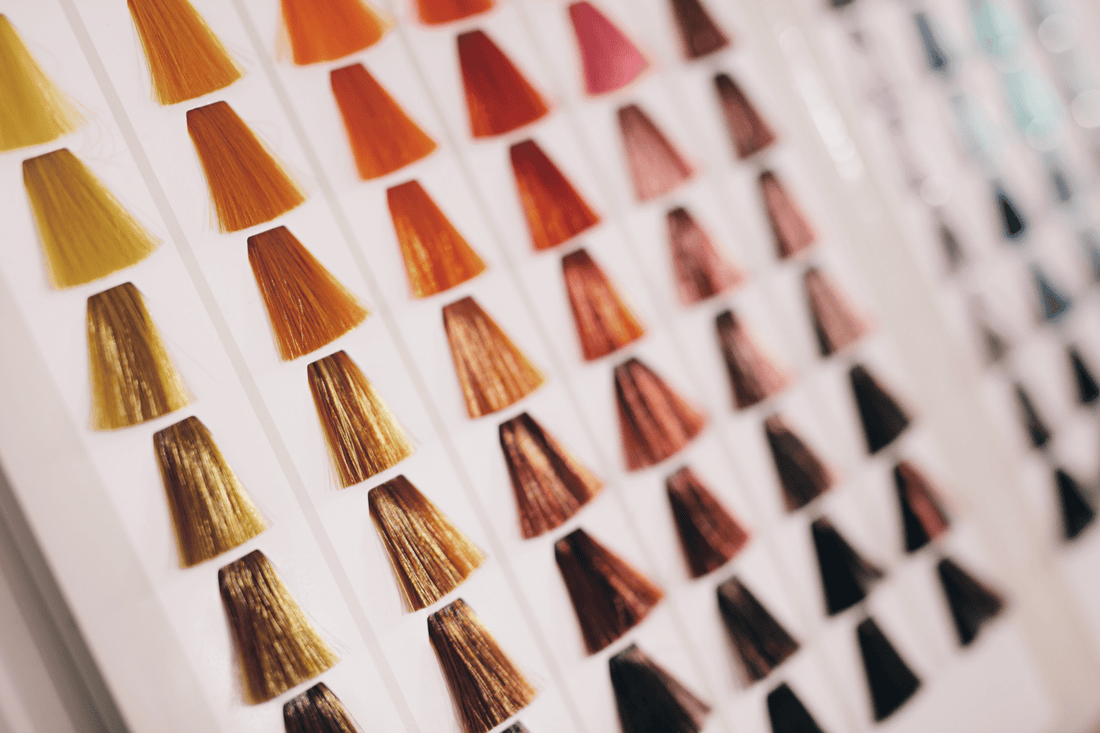Have you ever heard of the hair color scale? The hair color scale is something you may have heard through conversations with your own hair stylist. When you decide to dye your hair, there are certain things that must be considered before you reach your end color goal - and the hair color scale is undoubtedly one of the most important. Continue to read below to understand how the hair color scale affects your current and desired hair color.
Natural Hair Tones
Everyone has a hair tone. Despite whether your hair has been chemically processed or not, it lies within a number on the hair color scale. Your natural hair tone is the tone of the hair that you were born with. Did you know that everyone’s hair has either some kind of pigments of brown, red, black, orange, and yellow? Hair that is level 4 and below on the scale will usually hold more red pigments, hair in level 5-7 tend to have more orange pigments, and hair within levels 8-10 have yellow pigments. If you have a lot of red, orange, and yellow tones in your hair, it is considered warmer. Warm and cool tones will neutralize each other when combined. If you want brighter colors for your hair, warm tones will help add vivacity. If you're looking for an ashier, mellow look then cool tones will reduce the bright tones.
Levels on the Hair Color Scale
Hair color levels determine how dark or light your hair is. There are many different hair color level charts out there, but the general breakdown is from levels 1-10, with level 1 on the scale being the darkest (think jet black hair) and level 10 being the lightest (think light blonde). Hair color level is important because it gives you an understanding of what level your hair is at and what level you would like to achieve. Something to keep in mind is that if you’re still confused about what level and tone your hair is, it might be best to see a professional hair stylist. They can guide you through the process of coloring your hair in the healthiest way possible. For example, if you are at a level 1 but want to be a level 9, that is not safely possible for your hair in one session. Also note that it may take multiple hair toning sessions to achieve the look that you want because you should only lift your hair 1-2 levels in one session. When lightening dark hair, you should avoid depleting your hair in the hair coloring process, so it’s best to go slow and work your way up to the level that you want.
Hair Color Scale Breakdown
There are two elements to the hair color scale: a number and a letter. The number refers to your hair level and then the letter refers to your hair tone. So, when you combine the two you may get something like 5N - Level 5, natural brown hair. If you’re looking for a way to pick the best hair color for yourself, consider your skin's tone. If you have skin with more a warm skin undertone, then cooler/ashier shades may compliment you better; think about a mushroom brown shade. If you have a more cool skin undertone, warmer shades can help brighten you up; consider a golden blonde look.
Hair Health and Coloring
The idea of dying your hair to a new color is exciting, but there are a few intricacies to keep in mind when you are looking to chemically process it. If you are looking to dye your hair lighter when it has previously been colored before, you must know that hair bleach is the one of the only ways to lighten it and achieve the hair color you want. Bleach is very potent and must be handled carefully. That being said, it can also be very damaging to your hair. If your hair is already very brittle and dry, bleach will not be your friend. Dry hair equals more porosity, which can be great in taking in and handling vibrant colors, but damaging hair health in the meantime. Those who choose to chemically process their hair with already damaged hair should take extra precaution and care - do deep conditioning masks, nourish your locks with hair oils, and just go above and beyond to give your hair some TLC.
Wrapping Up The Hair Color Scale
There you have it, now you may better understand your own stylists’ thought process when you undergo your next hair appointment or how you can better understand yourself when dying your hair at home. The hair color scale is very important in understanding realistic hair goals for yourself and the steps to take safely moving forward in terms of hair health. We recommend seeking a professional hair stylist if you’re dealing with coloring hair that is already damaged, aiming for a color that is far from your natural hair level, or want a look that is very specific in color.
Have damaged or thinning hair from previous hair color treatments? Turn to a routine of gentle hair care practices and strengthening products like the Revela Hair Revival Serum in order to help promote a healthy head of hair.




